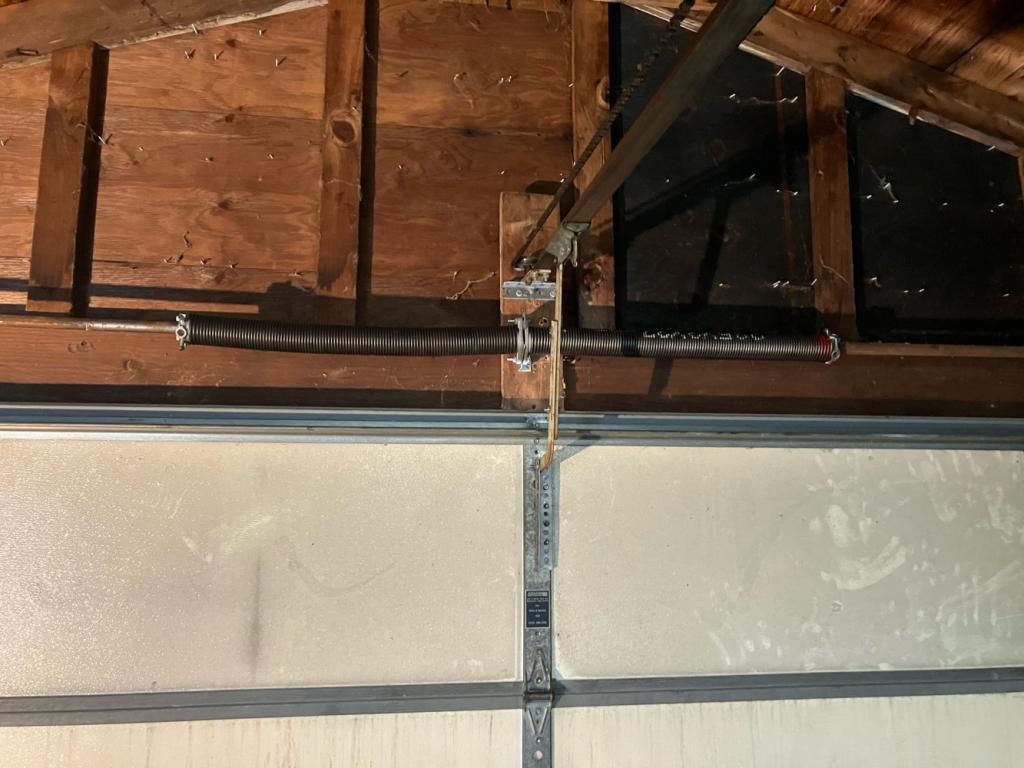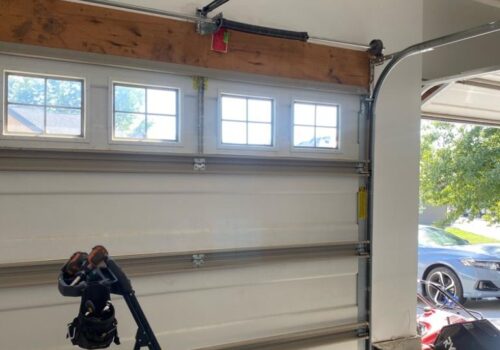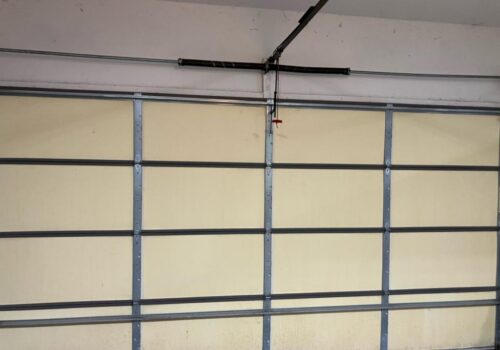A client in Valley, NE, contacted Titan Garage Doors NE for help with his home's garage door. Their garage door would not open, and they needed a garage door repair company to fix it as soon as possible. We sent out our crew to the location and, upon arrival, discovered that a broken torsion spring was the problem. We explained to the owner what the more durable, stronger torsion spring options would be, and they agreed to use them on their garage door. We quickly replaced the snapped garage door spring, and we completed the garage door spring replacement in under one hour. After thoroughly examining every moving component and a series of testing, the garage door was restored to excellent working order. The client was really happy with our prompt response.
Garage door springs are a very important part of a garage door. They are used to lift the door up and down. Unfortunately, when a garage door spring breaks, the door is dangerous to fall down on a person or vehicle right in its path. Although this problem can be pretty common, there are ways to prevent it from happening.
Signs That a Garage Door Spring Is Broken
If your garage door hints about a problem with your springs, take some time to look at them directly. It will give you the most obvious solution. Check your door carefully to see if any of these other problems might be present:
- The upper portion of the door seems out of alignment.
- The door barely moves upward before slamming shut once again.
- The cables holding the springs together are hanging.
- The door appears to be misaligned or skewed.
Any of these could indicate that your spring is broken or damaged. Finding the cause of your issue will help you and your technician save a lot of time and effort, enabling you to have your garage door fixed and working properly once again in a shorter amount of time.
The Average Life of Garage Door Springs
The lifespan of extension and garage door torsion springs ranges from 10,000 to 50,000 opening and closing cycles. And among the spring types, we can emphasize three:
- Standard cycle springs — 10,000 cycles
- High cycle springs — 25,000 cycles
- Highest cycle springs — 50,000 cycles
How to Determine a Garage Door Spring Lifespan
One life cycle means one opening and closing. The following crucial elements have to be taken into account to determine the garage door spring's total life cycle:
- The size of the wire
- The diameter of the spring
- The length of the spring
- The weight of the door
Different types of garage door springs have different lifespans. Sturdier, thicker wires can resist more stretching and bending than thinner wires, resulting in a longer lifespan. More expensive springs typically have thicker wires. Additionally, using stronger garage door springs is preferable to using smaller ones. Smaller springs will be more costly because you will need to replace them more frequently.
Conclusion
Torsion and tension springs require regular garage door maintenance, inspection, and expert service to extend their lifespan. The durability of garage door springs depends on the quality of the mechanism, level of effort, available resources, and other factors. Additionally, external variables such as the environment and weather can affect the performance and lifetime of garage door springs. You can take preventative measures to reduce the impact of these variables, but professional assistance is still recommended if you want to maximize their lifespan.
If your garage door breaks down in the middle of an emergency, it can be incredibly frustrating. It is important to regularly maintain your garage door to prevent this from happening. With over a decade of garage door repair service, Titan Garage Doors NE offers a convenient maintenance plan to keep your garage door functioning properly. For free estimates, contact us today.






Comments: